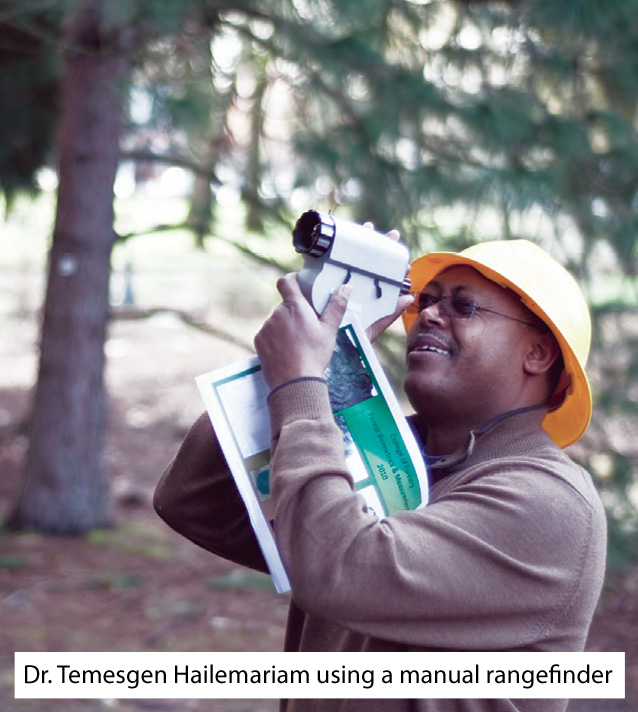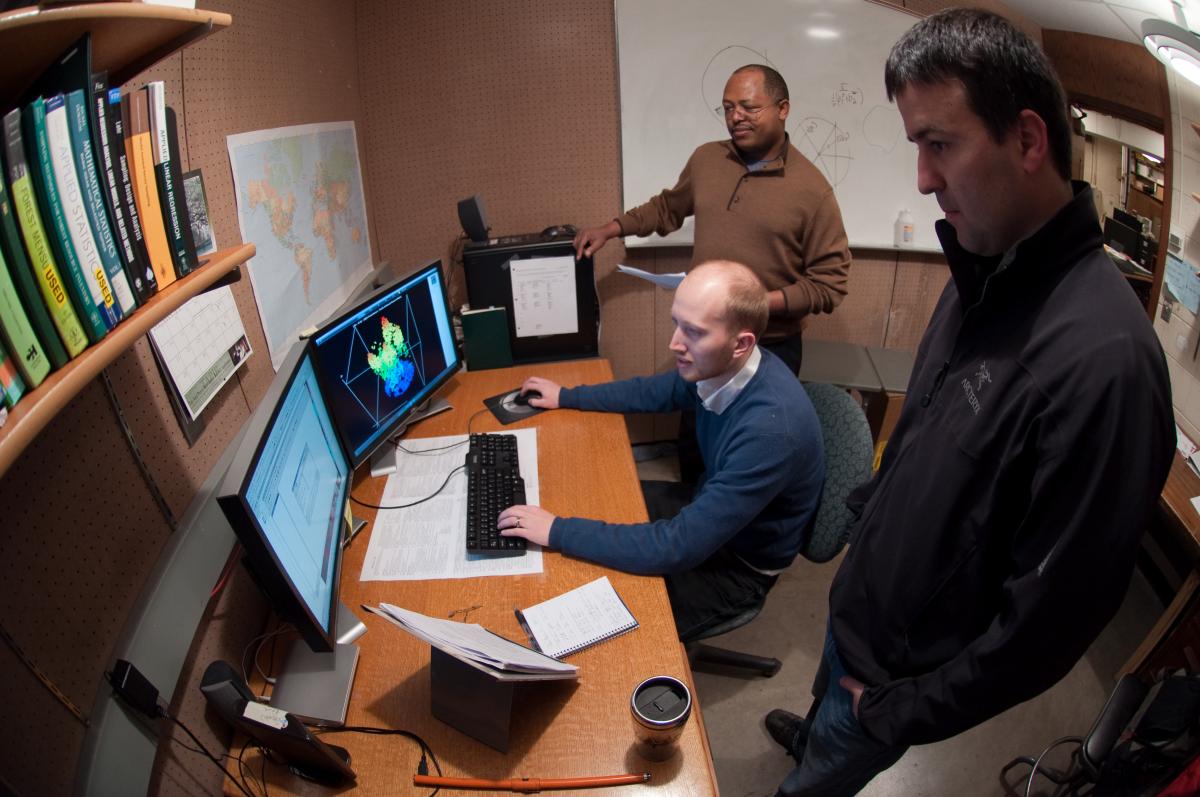Forest Measurements and Biometrics Laboratory
Faculty statement:
Teaching and conducting research at a premier forestry institution has been one of my lifetime professional goals and my position at OSU has provided me with this opportunity. The synergy that has de veloped between OSU’s respected faculty and my substantive background in quantitative analysis has led to a cohesive teaching and research program aimed at addressing the pressing needs of society.
veloped between OSU’s respected faculty and my substantive background in quantitative analysis has led to a cohesive teaching and research program aimed at addressing the pressing needs of society.
Forest resource management is currently faced with a myriad of challenges. Solutions to these challenges require quantitative approaches in order to reach sound and broad-based solutions. The field of forestry has become increasingly quantitative in its approaches to research and management. Rising forest values increase the demand for accuracy and precision in quantitative approaches for management prescriptions and projected outcomes. Both trends have magnified the importance of forest measurement and biometrics as tools of forestry science. The FMB’s graduate students, research associates, research partners, and I look forward to the challenge of achieving these goals.
Teaching:
I teach two courses at OSU: FOR 321 - Forest Mensuration (5 credits) at the undergraduate level and FOR 524 Forest Biometrics (3 credits) at the graduate level. Both courses are highly quantitative and taught rigorously. I believe that teaching is an interactive process of learning and imparting knowledge, skills, and professional attitudes to develop future resource managers, policy makers, and scientists, and not just the delivery of a curriculum.
Research:
My research focuses on three major areas and seeks to develop (or extend): 1) imputation methods that support dynamic forest inventory, silvicultural planning, and habitat analysis; 2) sampling and statistical methods to characterize and quantify status and change of selected attributes including biomass and carbon and 3) Applications of lidar to forest measurements and assessments.
My philosophy on scholarship and creative endeavor is centered on the premise that research has to have scientific rigor and be responsive to contemporary resource management challenges. I uphold these professional requisites by developing innovative statistical approaches and by disseminating research results through varied outlets. In keeping with this philosophy, I have communicated the results of my research in varied technical publications including refereed journal articles, and invited and volunteered presentations at regional, national, and international conferences.
Drawn to opportunities for interdisciplinary collaboration, I have led a group of prominent scientists to identify the status and future needs of forest measurements and biometrics in the Pacific Northwest, culminating in a recent article in the Journal of Forestry. In addition to integrating the three themes of my research with other disciplines of forestry, this endeavor has helped the FMB program to achieve a regional and a national recognition, and identify some of the most significant challenges facing FMB professionals in the 21st Century.
 There are many forest management and policy problems that, at first glance, do not appear to involve FMB but which, on further examination, are found to be closely linked. In this regard, FMB has both an “inside” and “outside.” The outside part faces interactions with its clients (such as natural resource specialists) and front-line sciences (e.g., forest ecology, silviculture, etc.) which bring new data-analytic ideas to FMB. The clients and professionals in these allied sciences need solutions to pressing statistical/quantitative questions. The inside face relates to the need to extend the structure of statistical inference, integrate emerging technologies, and adapt mathematical and statistical precepts to FMB needs. To improve natural resource planning through cost effective and accurate data, I am currently developing methods to improve the accuracy of forest inventory and monitoring using LiDAR data and new technologies.
There are many forest management and policy problems that, at first glance, do not appear to involve FMB but which, on further examination, are found to be closely linked. In this regard, FMB has both an “inside” and “outside.” The outside part faces interactions with its clients (such as natural resource specialists) and front-line sciences (e.g., forest ecology, silviculture, etc.) which bring new data-analytic ideas to FMB. The clients and professionals in these allied sciences need solutions to pressing statistical/quantitative questions. The inside face relates to the need to extend the structure of statistical inference, integrate emerging technologies, and adapt mathematical and statistical precepts to FMB needs. To improve natural resource planning through cost effective and accurate data, I am currently developing methods to improve the accuracy of forest inventory and monitoring using LiDAR data and new technologies.